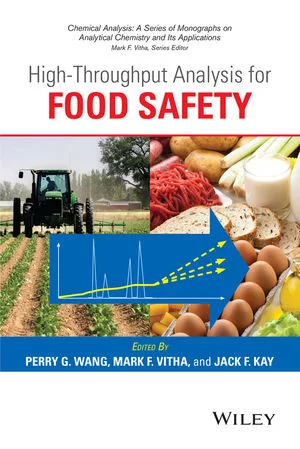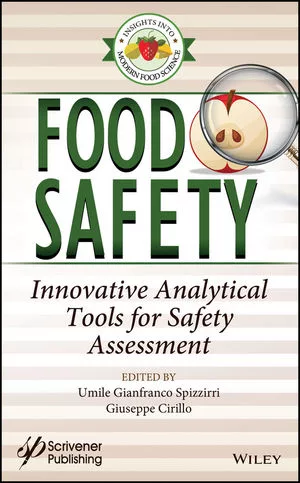New EU Maximum Levels for Mycotoxin Ochratoxin A

Credit: nataliaaggiato (nataliaaggiato-470329) via Pixabay
The European Commission (EC) recently updated its regulation on maximum levels (MLs) for ochratoxin A, a type of mycotoxin produced by Aspergillus and Penicillium fungi, in foods. Ochratoxin A may be carcinogenic to consumers, and is formed during sun drying and storage of crops. The growth of the mycotoxin can be prevented by employing good drying and storage practices.
The changes were made based on the European Food Safety Authority’s (EFSA’s) 2020 scientific opinion on the level of exposure to ochratoxin A that may pose a public health risk. Although MLs for the mycotoxin were already established for certain foods in a prior EC regulation, the new regulation sets MLs for certain foodstuffs for which no MLs have been described, as well as amends MLs for certain commodities based on the most current available scientific knowledge.
Specifically, the regulation establishes MLs for dried fruit other than dried vine fruit, certain licorice products, dried herbs, certain ingredients for herbal infusions, certain oilseeds, pistachio nuts, cocoa powder, non-alcoholic malt beverages, and date syrup. The regulation also lowers existing MLs for bakery products, dried vine fruit, roasted coffee, and soluble coffee, as well as expands standing provisions for specific spices to all spices.
The updated MLs for each food commodity are as follows:
- Unprocessed cereals: 5.0 micrograms per kilogram (μg/kg)
- All products derived or processed from unprocessed cereals, with certain exceptions: 3.0 μg/kg
- Cereals placed on the market for the final consumer: 3.0 μg/kg
- Bakery wares, cereal snacks, and breakfast cereals not containing oilseeds, nuts, or dried fruit: 2.0 μg/kg
- Bakery wares, cereal snacks, and breakfast cereals containing at least 20 percent dried vine fruit and/or dried figs: 4.0 μg/kg
- Other bakery wares, cereal snacks, and breakfast cereals containing oilseeds, nuts, and/or dried fruit: 3.0 μg/kg
- Non-alcoholic malt beverages: 3.0 μg/kg
- Wheat gluten not placed on the market for the final consumer: 8.0 μg/kg
- Dried vine fruit (currants, raisins, and sultanas) and dried figs: 8.0 μg/kg
- Other dried fruit: 2.0 μg/kg
- Date syrup: 15 μg/kg
- Roasted coffee beans and ground roasted coffee, excluding soluble coffee: 3.0 μg/kg
- Roasted soluble coffee (instant coffee): 5.0 μg/kg
- Wine (including sparkling wine, excluding liqueur wine and wine with an alcoholic strength of no less than 15 percent by volume) and fruit wine: 2.0 μg/kg
- Aromatized wine, aromatized wine-based drinks, and aromatized wine product cocktails: 2.0 μg/kg
- Grape juice, reconstituted concentrated grape juice, grape nectar, grape must and concentrated grape must as reconstituted, placed on the market for the final consumer: 2.0 μg/kg
- Processed cereal-based foods for infants and young children, and baby foods: 0.50 μg/kg
- Dietary foods for special medical purposes intended for infants and young children: 0.50 μg/kg
- Spices, including dried spices, except Capsicum: 15.0 μg/kg
- Capsicum (dried fruits thereof, whole or ground, including chilies, chili powder, cayenne, or paprika): 20.0 μg/kg
- Mixtures of spices: 15.0 μg/kg
- Licorice (Glycyrrhiza glabra, Glycyrrhiza inflate, and other species) root, including as an ingredient in herbal infusions: 20.0 μg/kg
- Licorice extract for use in food, particularly beverages and confectionary: 80.0 μg/kg
- Licorice confectionary containing more than 97 percent licorice extract on a dry basis: 50.0 μg/kg
- Other licorice confectionary: 10.0 μg/kg
- Dried herbs: 10.0 μg/kg
- Ginger roots for use in herbal infusions: 15.0 μg/kg
- Marshmallow roots, dandelion roots, and orange blossoms for use in herbal infusions or in coffee substitutes: 20.0 μg/kg
- Sunflower seeds, pumpkin seeds, melon (including watermelon) seeds, hempseeds, and soybeans: 5.0 μg/kg
- Pistachios to be subjected to sorting, or other physical treatment, before being placed on the market for the final consumer or used as an ingredient in food: 10.0 μg/kg
- Pistachios placed on the market for the final consumer or for use as an ingredient in food: 5.0 μg/kg
- Cocoa powder: 3.0 μg/kg
The regulation notes that additional monitoring on the presence of ochratoxin A in cheese and ham is necessary before establishing MLs for those commodities.
The regulation will go into effect on January 1, 2023. Foods subject to the regulation that are legally marketed prior to January 1, 2023 may remain on the market until their date of minimum durability or use-by date.
Looking for quick answers on food safety topics?
Try Ask FSM, our new smart AI search tool.
Ask FSM →








